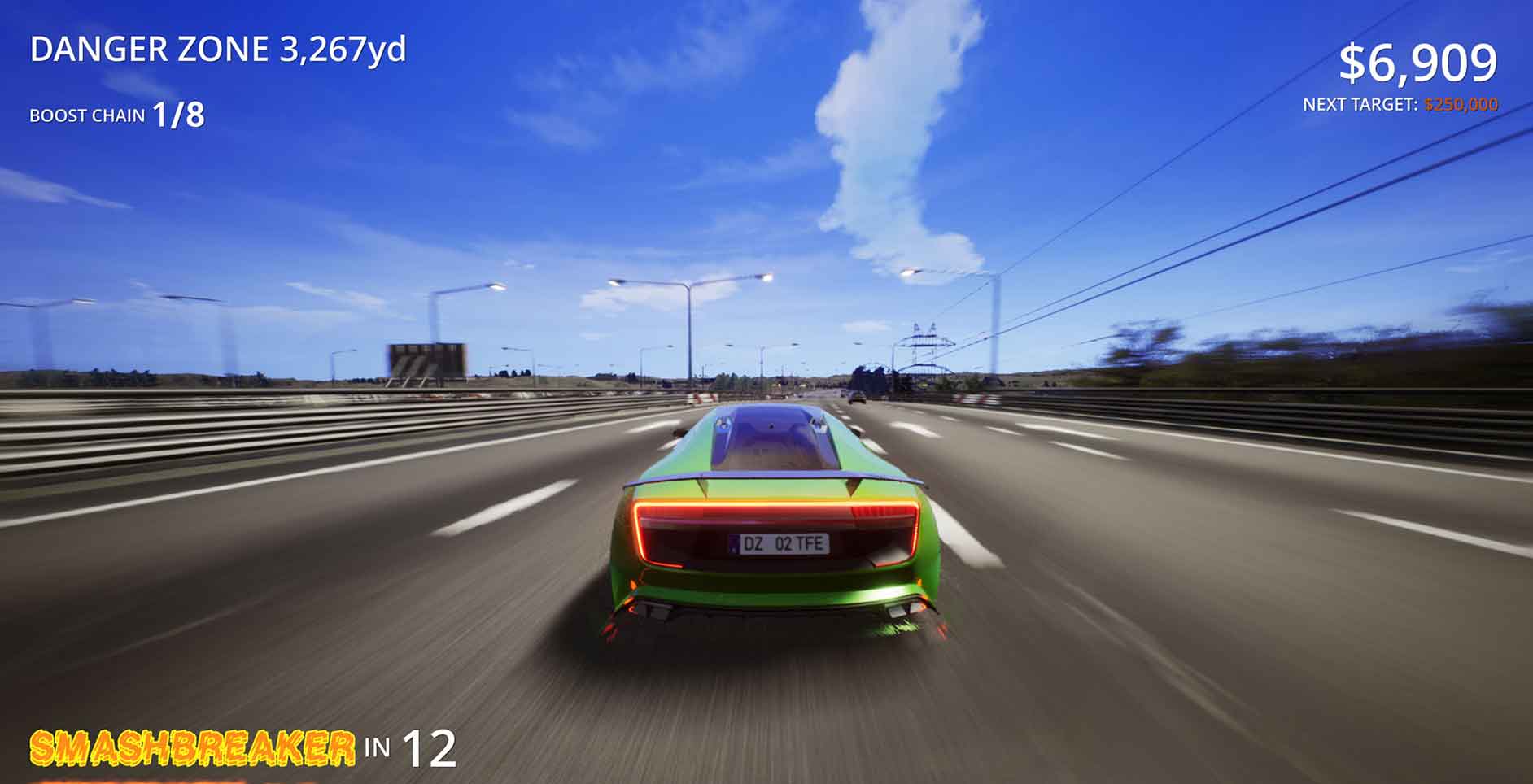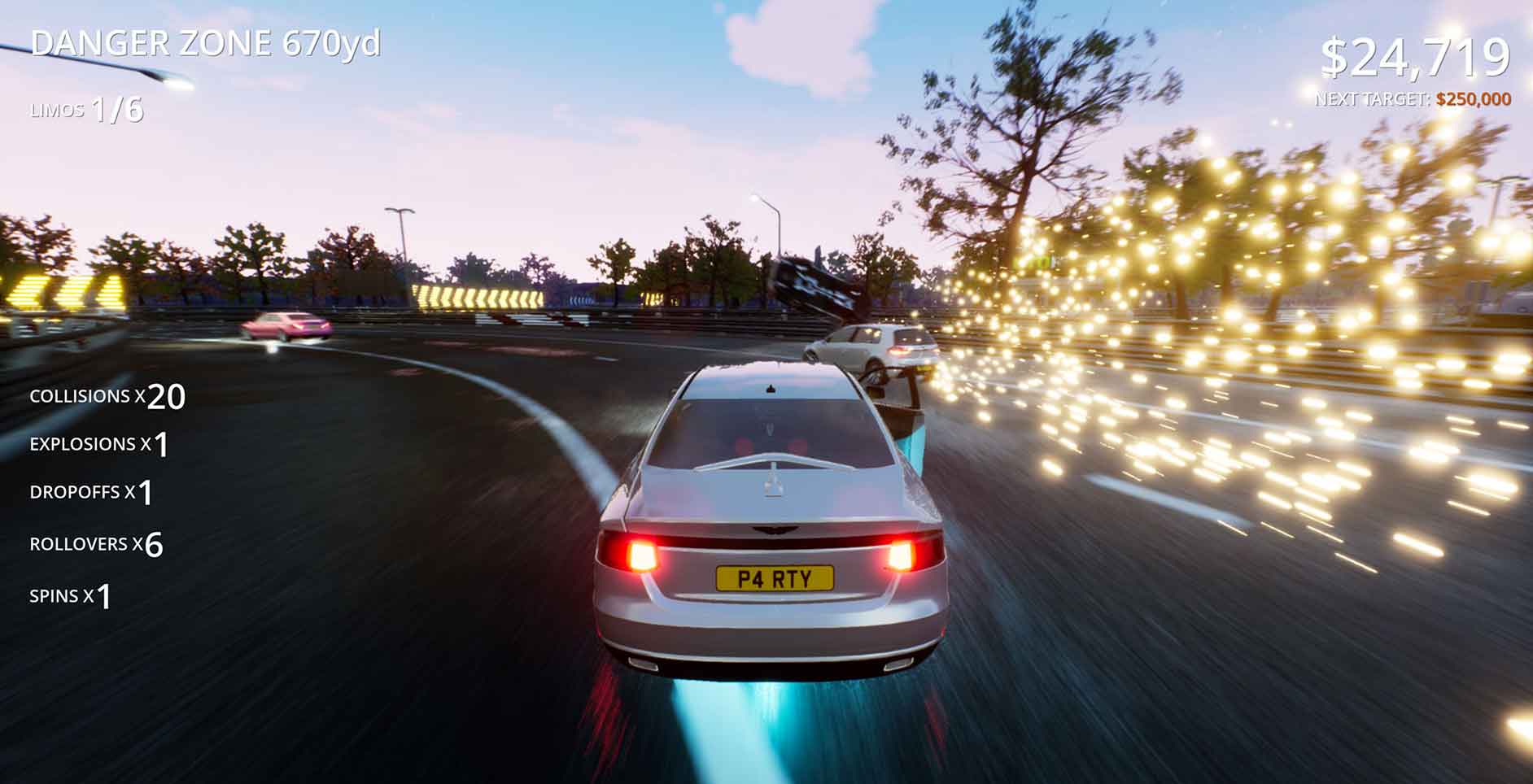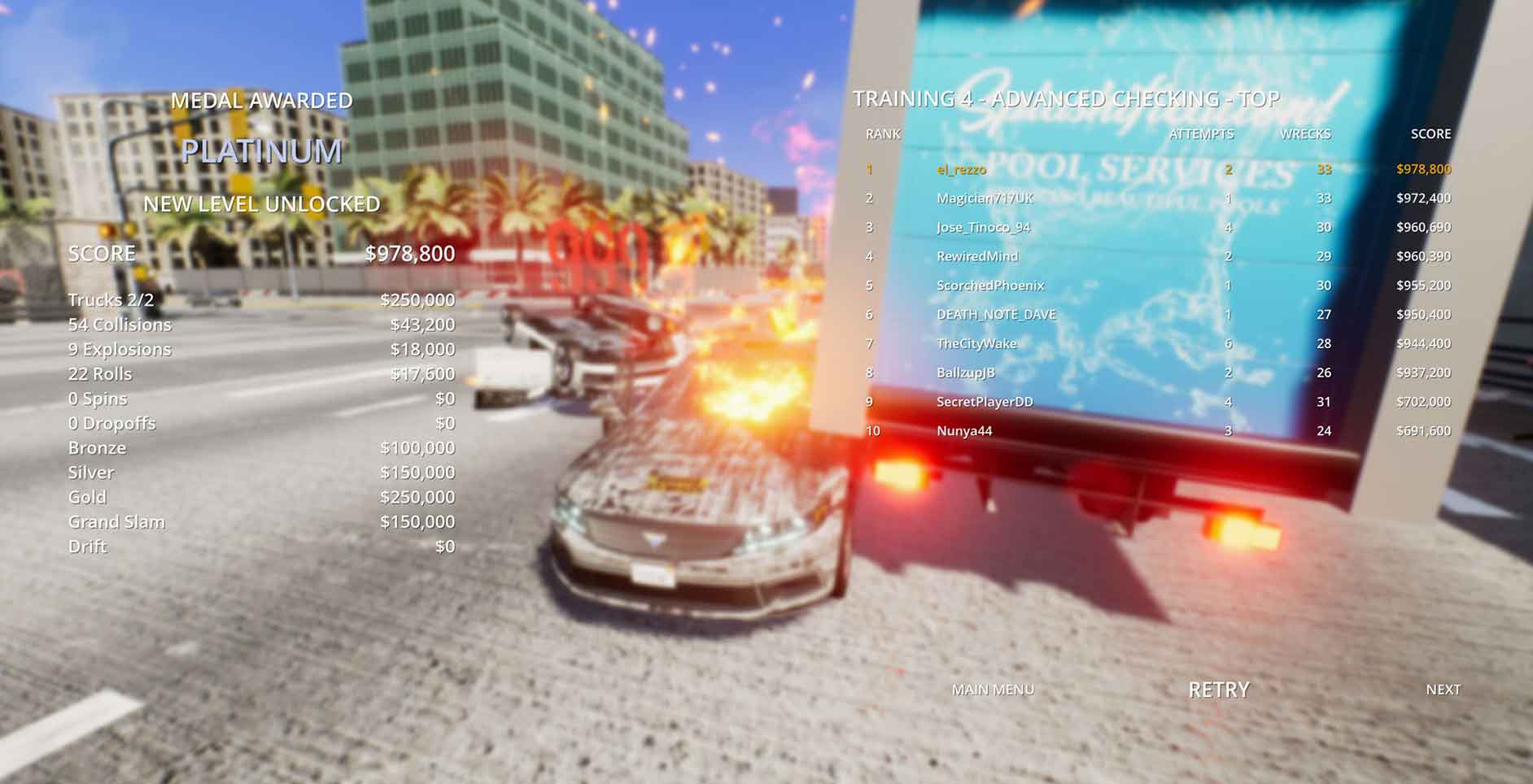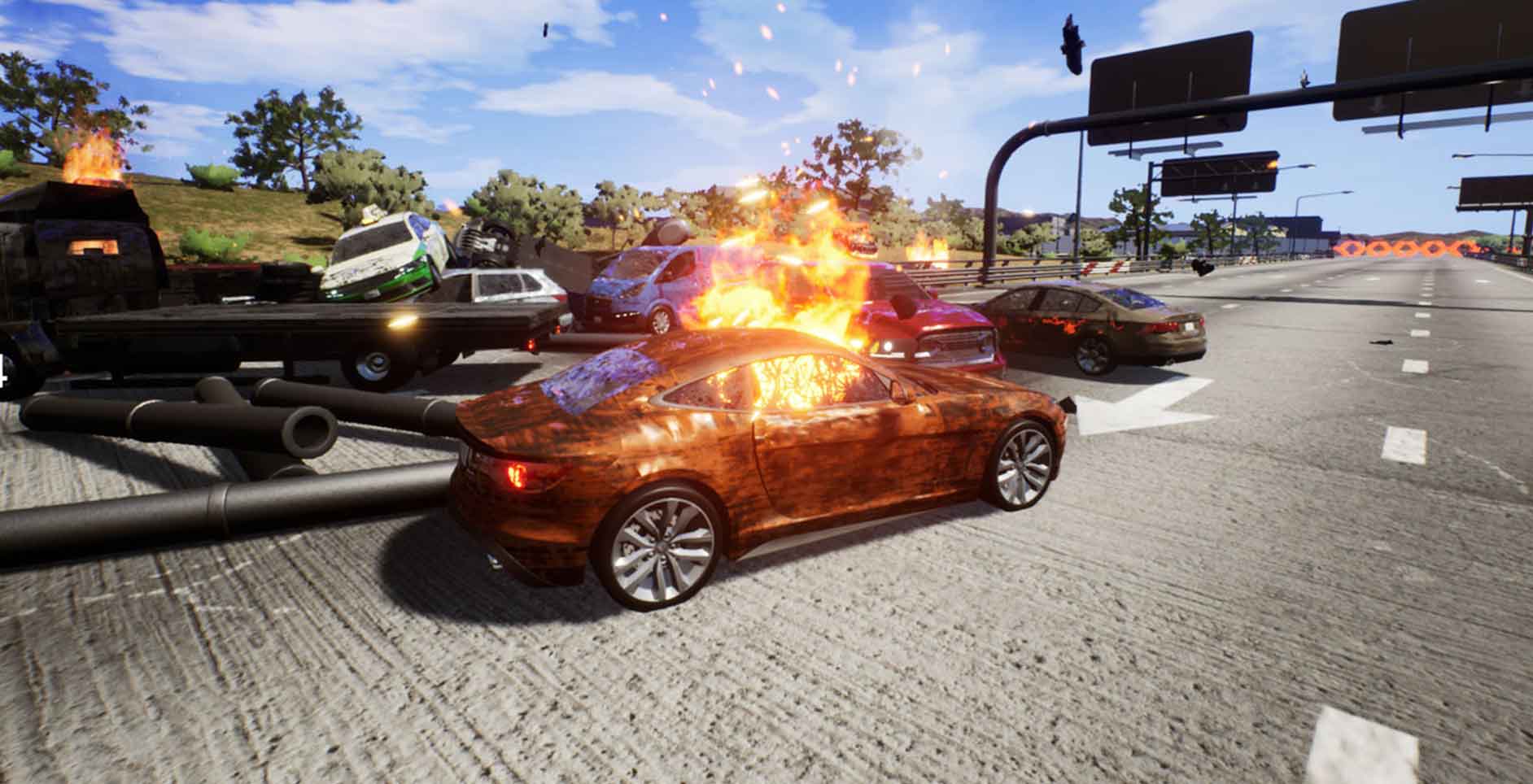Three Fields has slowly stepped up their releases, getting closer to their legacy while at Criterion on the Burnout series. Danger Zone 2 is the strongest step so far in terms of looking to recapture the magic of the classic Crash mode. Only 9 months out from the first in the series with another sequel, Dangerous Driving, already announced.
Straight off the bat you’ll notice that the game has moved from the concrete testing rooms of the first game into the classic pieces of roadway you would see in a racing game, as a run up to the crash zone. Art is crisp and colourful with the focus on clean visuals to make flying down roads easier to gauge. Checking traffic sees explosions of sparks as they careen out of control, but damage to vehicles are restricted to a fairly binary system of fine or wrecked which takes away some of the enjoyment of wrecking havoc to an intersection.

The extremely basic UI highlights the biggest problem with the game, a very bare bones package. Font throughout is clean and clear without any style to it while bizarrely being hard to read at times due to the colours and positioning used. Crashes add to your overall destruction total without being highlighted individually with only a final tally screen breaking it down into categories, another major step back from the Burnout series. The settings menu itself is restricted to only an image of the controller and a rundown of the titles the team have made so far. Nothing to tweak or adjust, not even brightness or the sound level. No replay options. Just an option of which of the 23 challenges to undertake or retry.
Music? None. Sound effects are quite basic and overall nothing stands out which is a real disappointment. There is a leaderboard system in place for each challenge but no replay system to speak of. Frame rate generally holds up quite well even with lots of traffic on screen and pop in only seemed to be an issue in the bonus time trial tracks thankfully. In a strange decision only Xbox One X has the option of a 60fps mode, with PS4 Pro sticking to 30fps, I really hope to see this implemented in a patch down the line as it would greatly improve the experience.

The core crash em up gameplay is here in spades. Each challenge has plenty of room for traffic checking and a special run up challenge which is key to hitting the higher level rankings. These run up challenges end up being a great way to establish the required strategy for a course, when loading a challenge you won’t receive a course fly through so trial and error comes into play before you can truly picture the perfect run. As expected once you hit the crash area the objective is to cause as much mayhem as possible but to hit a platinum level of destruction you will need to explode your wreck through powerup tokens to maximum the result. Hitting the bronze, silver and gold tokens requires some fancy placement of crashes, along with hitting enough explode tokens to maneuver to the tokens in the first place. Replayability comes from the satisfaction of nailing a crash in the right spot, at the right time, to cause enough of a reaction to explode through all the tokens. Having the run up challenge valued just as highly as the tokens means just as much thought needs to go into the run up as the crash and I found these to be the highlight of the game. Some require continued boosting to the crash zone, traffic checking on the way or even taking out specific traffic such as limos or trucks.
Four unique vehicle categories gives some variety to the proceedings. Aside from the rudimentary gameplay of a regular car or truck you also need to utilise a F1 car to hit time trial checkpoints and a super car fitted out with nitro boost. As these are specific challenges you unfortunately cannot swap vehicles around to find more interesting solutions to challenges but at least offer something different to the stock standard crash. Trucks allow you to plow through traffic, cars can shunt traffic onward but will crash out if they hit the back of a larger vehicle such as a bus. The crash zone is also very finicky and requires you to land within the zone to have a successful result, even if you’re well over the destruction total required and the end of run timer can still jump in much too soon. The challenge environments are quite static without any remarkable qualities, the odd jump here and there showing the only signs of anything interesting.

Overall it’s hard to not be disappointed with the follow up to the promise of more Crash mode in the first game, especially when the follow up Dangerous Driving has already been hyped up. The package is bare bones, short on content and polish. The core is shaping up well but it’s hard to recommend at this price point when you will be done with it in one night, a weekend at most. I’d love to see something in the vein of Burnout Legends where you have 100 crash challenges and nearly 100 cars, even a challenge editor would go a long way to making this a more substantial game.



